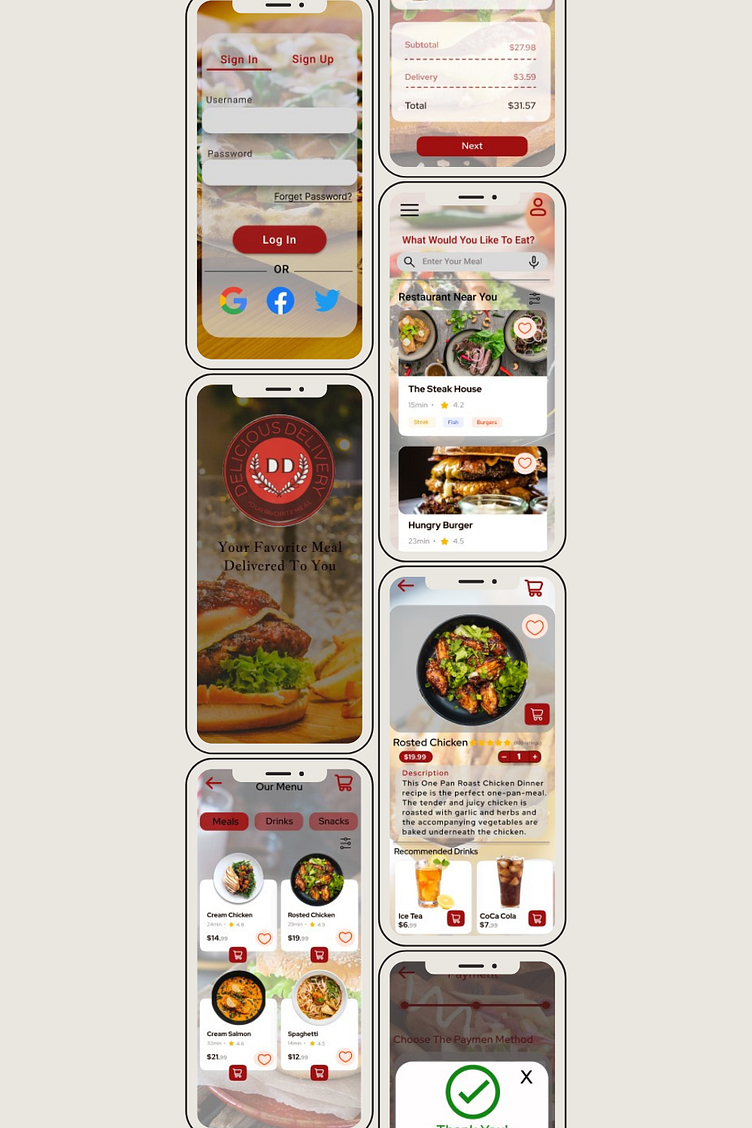Delicious Delivery
Project Overview
Delicious Delivery is an innovative food delivery app designed to provide a seamless and convenient dining experience for individuals who are unable to visit restaurants in person. Our mission is to eliminate the need for customers to wait in line, allowing them to place their orders remotely and conveniently pick up their freshly prepared meals.
The Problem
In today's fast-paced world, many individuals lead busy lives and often struggle to find time to personally visit restaurants and place orders for their meals. This time constraint poses a significant challenge for these time-strapped customers, as they are unable to enjoy the convenience and variety of dining options available to them.
The Goal
Our goal is to design and develop a cutting-edge mobile application that not only allows people to order their favorite meals but also revolutionizes the food delivery experience. We aim to create a platform that seamlessly connects customers with their desired meals and delivers them with utmost convenience and satisfaction.
Design thinking process
1) Empathize
2) Define
3) Ideate
4) Prototype
5) Test
Research — Understanding the user
I conducted interviews and created empathy maps to understand the users I'm designing for and their needs. A primary user group identified through research
was busy schedule worker who don't have time to go in person to order their meals.
This user group confirmed initial assumptions about Delicious Delivery customers, but research
also revealed that time was not the only factor limiting users from going in person.
Other user problems included obligations, interests, or challenges that make it
difficult to go to restaurants in-person.
Pain Points
Persona
Problem statement
John is a busy student who needs to order his food online because he don’t have the time to do it in person.
User journey map
Starting with the Design
Paper wireframes
Taking the time to draft iterations of each screen of the app on paper ensured
that the elements that made it to digital wireframes would be well-suited to address user pain points. For the home screen, | organized user likely restaurant.
Digital wireframes
As the initial design phase Continued | made sure to base screen designs on feedback and findings from the user research.
Low-fidelity prototype
The low-fidelity prototype connected the primary user flow of building and ordering meals, so the prototype could be used in a usability study with users.
You can checkout Here.
Usability studies
Mockups
High-fidelity prototype
The final high-fidelity prototype presented cleaner user flows for building an order and checkout. It also met user needs for delivery options as well as more customizations. You can check it Here.
Accessibility
Going forward
Impact:
The app makes users feel like Delicious Delivery really thinks about how to meet their needs.
What I learned:
While designing the Delicious Delivery app, I learned that just day-dreamt ideas are not enough to make products. Research studies in every step of the product lifecycle add value and directions to our efforts.
Next steps
1) Conduct another round of usability studies to validate whether the pain points users experience have been effectively addressed.
2) Conduct more user research to determine any new areas of need.
Let’s connect!
Thank you for your time reviewing my work on the Delicious Delivery app you'd like to see more or get in touch, my contact information is provided below
Email: alhassanhamoud26@gmail.com















